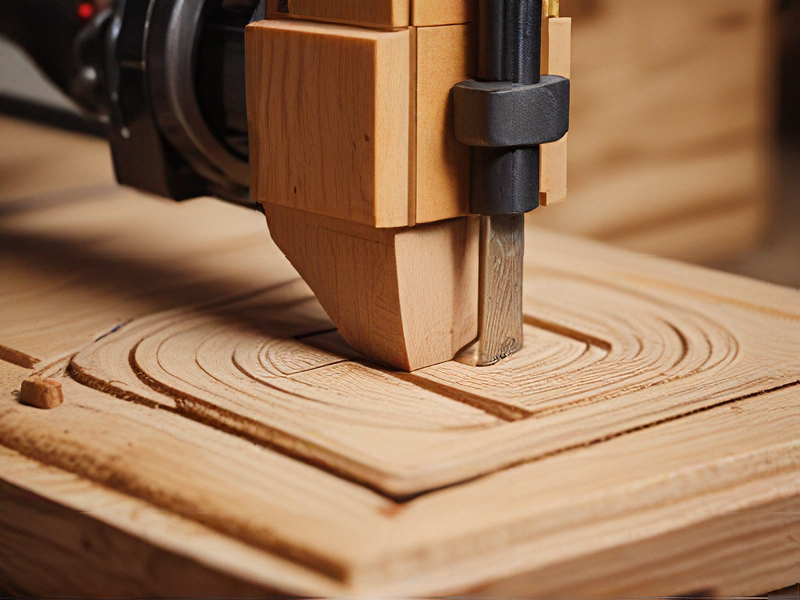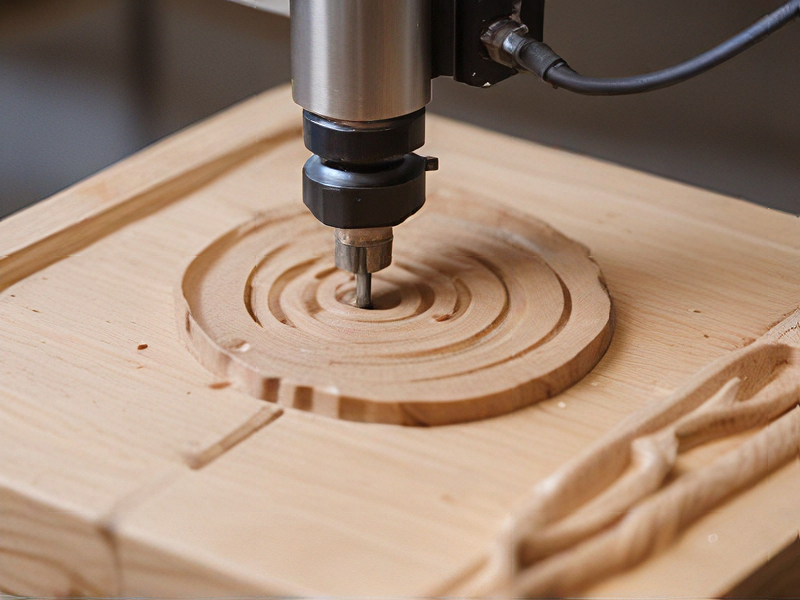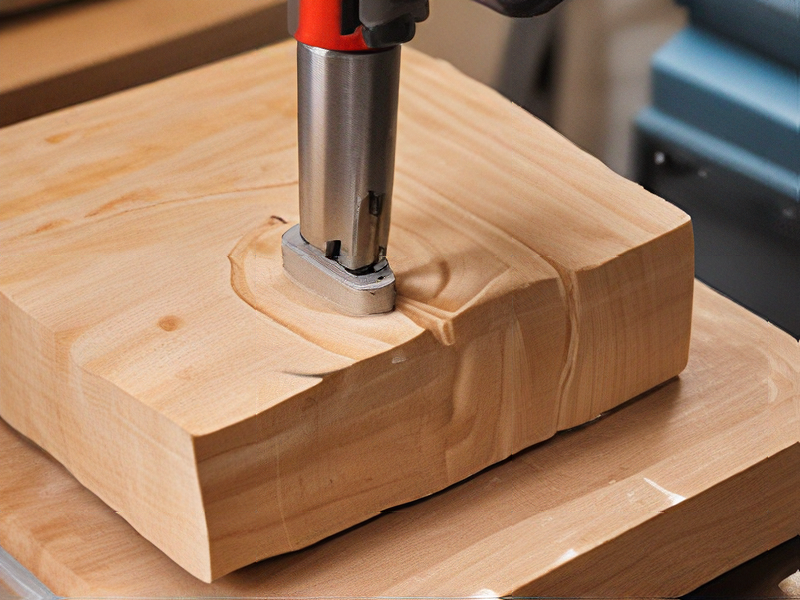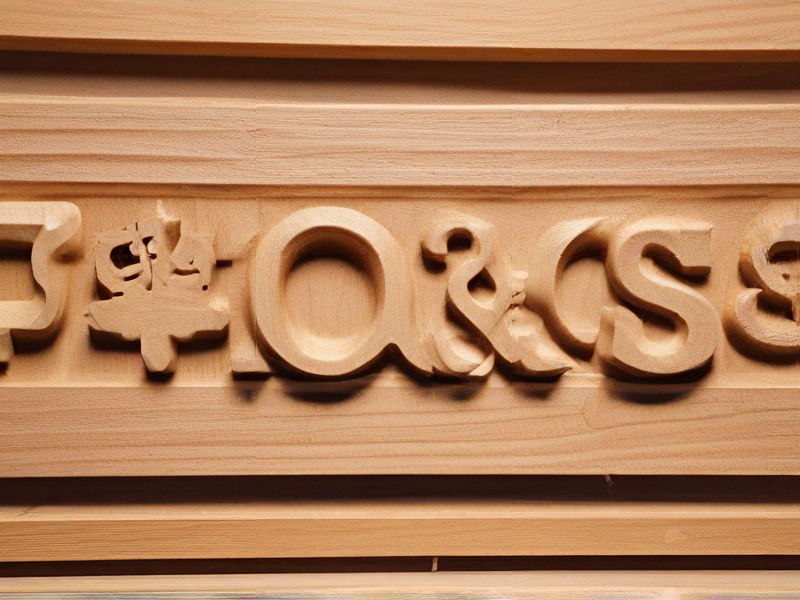Technology and Applications of carving wood machine
Carving wood machines, often referred to as CNC (Computer Numerical Control) routers, have revolutionized woodworking by combining precision and automation. These machines use computer-aided design (CAD) software to create detailed patterns, which are then translated into commands for the CNC machine to follow. Here’s a brief overview of their technology and applications:
Technology
1. CAD/CAM Software: Users design intricate patterns using CAD software. The designs are then converted into machine-readable code by CAM (Computer-Aided Manufacturing) software.
2. Control System: The CNC machine’s control system interprets the code and drives the motors to move the cutting tool along multiple axes (typically X, Y, and Z).
3. Spindle and Cutting Tools: The spindle holds the cutting tools, which can be changed depending on the desired cut type (e.g., engraving, drilling, or cutting).
4. Bed and Workholding: The workpiece is secured to the machine bed using clamps or vacuum systems to ensure stability during the cutting process.
5. Sensors and Feedback Systems: Modern machines often include sensors to monitor cutting conditions and provide feedback to adjust parameters in real time.
Applications
1. Furniture Manufacturing: CNC routers can produce complex components for chairs, tables, and cabinets with high precision and repeatability.
2. Sign Making: These machines can carve intricate designs, text, and logos into wood, making them ideal for creating custom signage.
3. Decorative Arts: Artists and craftsmen use CNC machines to produce detailed decorative panels, moldings, and sculptures.
4. Prototyping and Model Making: Designers and engineers use CNC routers to create prototypes and models from wood, which can be quickly iterated upon.
5. Architectural Components: CNC routers are used to fabricate detailed architectural elements such as corbels, columns, and ornamental trims.
Advantages
– Precision and Accuracy: CNC routers can achieve high levels of detail and consistency.
– Efficiency: They significantly reduce the time required for complex woodworking tasks.
– Versatility: Suitable for various applications, from small-scale projects to large industrial production.
In summary, CNC wood carving machines blend advanced technology with traditional craftsmanship, expanding the possibilities of woodworking and enhancing productivity and creativity in numerous fields.

Quality Testing Methods for carving wood machine and how to control quality
Quality testing methods for a wood carving machine typically focus on several key aspects to ensure consistent performance and output:
1. Dimensional Accuracy: Use calipers or laser measurement tools to verify that carved dimensions match specifications within acceptable tolerances.
2. Surface Finish: Inspect carved surfaces visually and with touch to ensure smoothness and absence of defects like tear-outs or rough patches.
3. Tool Integrity: Regularly check the condition of carving tools (e.g., bits, blades) for sharpness, wear, and damage that could affect carving quality.
4. Accuracy of Carved Details: Use magnification and visual inspection to verify intricate details and patterns are accurately reproduced.
5. Durability and Strength: Conduct stress tests or use wood hardness tests to ensure the carved wood maintains structural integrity over time.
6. Operational Efficiency: Monitor machine parameters such as speed, feed rate, and power consumption to optimize performance and detect anomalies.
To control quality effectively:
– Establish Standard Operating Procedures (SOPs): Define clear procedures for machine setup, operation, maintenance, and quality checks.
– Implement Regular Maintenance: Schedule routine maintenance tasks to keep the machine and tools in optimal condition.
– Train Operators: Provide training on machine operation, quality standards, and troubleshooting techniques to ensure consistent results.
– Use Statistical Process Control (SPC): Monitor and analyze process variables to detect trends or deviations that could impact quality.
– Feedback Mechanism: Establish a feedback loop where operators can report issues or suggest improvements for continuous quality enhancement.
By implementing these methods and controls, manufacturers can ensure that their wood carving machines consistently produce high-quality products that meet customer expectations.

Tips for Procurement and Considerations when Purchasing from carving wood machine
When procuring a carving wood machine, several key considerations ensure you get the best value and functionality. Here are some essential tips:
1. Assess Your Needs: Determine the specific requirements of your projects, including the types of wood, the complexity of designs, and production volume. This helps in choosing a machine with the appropriate capabilities.
2. Budget: Set a clear budget that includes not just the initial purchase price but also maintenance, software, and any potential upgrades.
3. Machine Specifications: Look at the machine’s size, power, spindle speed, and axis movement. Ensure it can handle the size and intricacy of your typical projects.
4. Software Compatibility: Ensure the machine is compatible with the software you are comfortable using or that it comes with user-friendly software for design and operation.
5. Precision and Accuracy: Check for precision and repeatability. High accuracy is crucial for detailed carvings, so look at the machine’s tolerance levels.
6. Build Quality and Durability: A well-built machine from reputable brands will offer longevity and reliable performance. Check for sturdy construction, preferably with high-quality materials like steel or aluminum.
7. Ease of Use: Opt for a machine that is easy to set up and operate. Look for features like intuitive interfaces, clear instructions, and good customer support.
8. Safety Features: Ensure the machine has adequate safety features to protect users from potential hazards. This includes emergency stop buttons, protective covers, and proper ventilation systems.
9. Support and Training: Consider the availability of customer support and training resources. Good after-sales support can be crucial in resolving issues quickly and efficiently.
10. Reviews and Recommendations: Read reviews and seek recommendations from other users in the woodworking community. Their experiences can provide valuable insights into the machine’s performance and reliability.
By carefully considering these factors, you can make an informed decision and select a carving wood machine that meets your needs and budget.

FAQs on Sourcing and Manufacturing from carving wood machine in China
Certainly! Here are some FAQs regarding sourcing and manufacturing carving wood machines in China:
1. Why should I consider sourcing carving wood machines from China?
China offers a competitive advantage in terms of cost-efficiency and a wide range of manufacturing capabilities. Many suppliers in China specialize in producing high-quality machinery at competitive prices.
2. How can I find reliable suppliers in China?
Use online platforms such as Alibaba or Made-in-China to search for suppliers. Look for suppliers with a good track record, positive reviews, and certifications indicating quality standards.
3. What should I consider when selecting a supplier?
Evaluate the supplier’s experience, production capacity, quality control measures, and ability to meet your specific requirements. Conduct factory audits if possible and request samples to assess product quality.
4. How can I ensure product quality when sourcing from China?
Specify your quality standards clearly in writing and discuss them with potential suppliers. Implement third-party inspections during production and before shipment to ensure adherence to specifications.
5. What are common challenges when sourcing from China?
Challenges may include language barriers, cultural differences, intellectual property protection, and logistics. Engage with suppliers who can communicate effectively in English and have experience exporting to your country.
6. How do I manage logistics and shipping?
Work with freight forwarders or logistics companies experienced in shipping goods from China. Plan for lead times and consider factors such as customs clearance and import duties.
7. What are the payment terms typically used in China?
Common payment terms include T/T (Telegraphic Transfer) and L/C (Letter of Credit). Negotiate terms that balance your risk and the supplier’s needs.
8. How can I protect my intellectual property (IP) when manufacturing in China?
Consider registering your IP in China and include confidentiality clauses in contracts with suppliers. Choose suppliers with a reputation for respecting intellectual property rights.
By addressing these FAQs, you can better navigate the process of sourcing and manufacturing carving wood machines in China, ensuring smoother operations and higher-quality outcomes.

